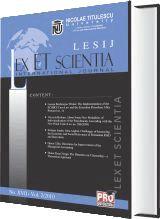THE REQUIREMENTS FOR PROTECTION OF THE COMMUNITY DESIGN
THE REQUIREMENTS FOR PROTECTION OF THE COMMUNITY DESIGN
Author(s): Alina Mihaela ConeaSubject(s): Law, Constitution, Jurisprudence
Published by: Universitatea Nicolae Titulescu
Keywords: community design; individual character; informed user; solely dictated by technical function; European Court of Justice
Summary/Abstract: This paper aims at showing the key issues underlying the requirements for protection of the community design. According to the Council Regulation (EC) No 6/2002, a design must satisfy two main conditions to be protected by a Community design: novelty and individual character. A further consideration is the requirement of visibility, but only when it comes to register component parts of a complex product. Three main types of subject matters are excluded from protection: first, a Community design cannot relate to characteristics of the appearance of a product that are exclusively dictated by its technical function; second, the situation referred to as “must fit” and “must match” cases and, third, a design applied to or incorporated in a component part of a complex product if the component part does not remain visible during the normal use of the complex product. Also, Community designs contrary to public policy or to accepted principles of morality are excluded from protection. One special interest of the paper is the recent jurisprudence of the community design courts in this field. A core element of the protection system is the role of the community court’s jurisdiction in matters of community design. These are courts of Member States that have been designated by them as community courts, which have exclusive jurisdiction to decide on cases of breaches of rights of community designs. The evolving and contradictory decisions of the national instances implies that with respect to the evolution of a homogeneous case law on unified Community industrial property, the European Court of Justice has had and still has to fulfil its exclusive mission of informing national courts as to the direction, in which European Union law is to develop.
Journal: LESIJ - Lex ET Scientia International Journal
- Issue Year: XVIII/2011
- Issue No: 1
- Page Range: 129-143
- Page Count: 15
- Language: English

